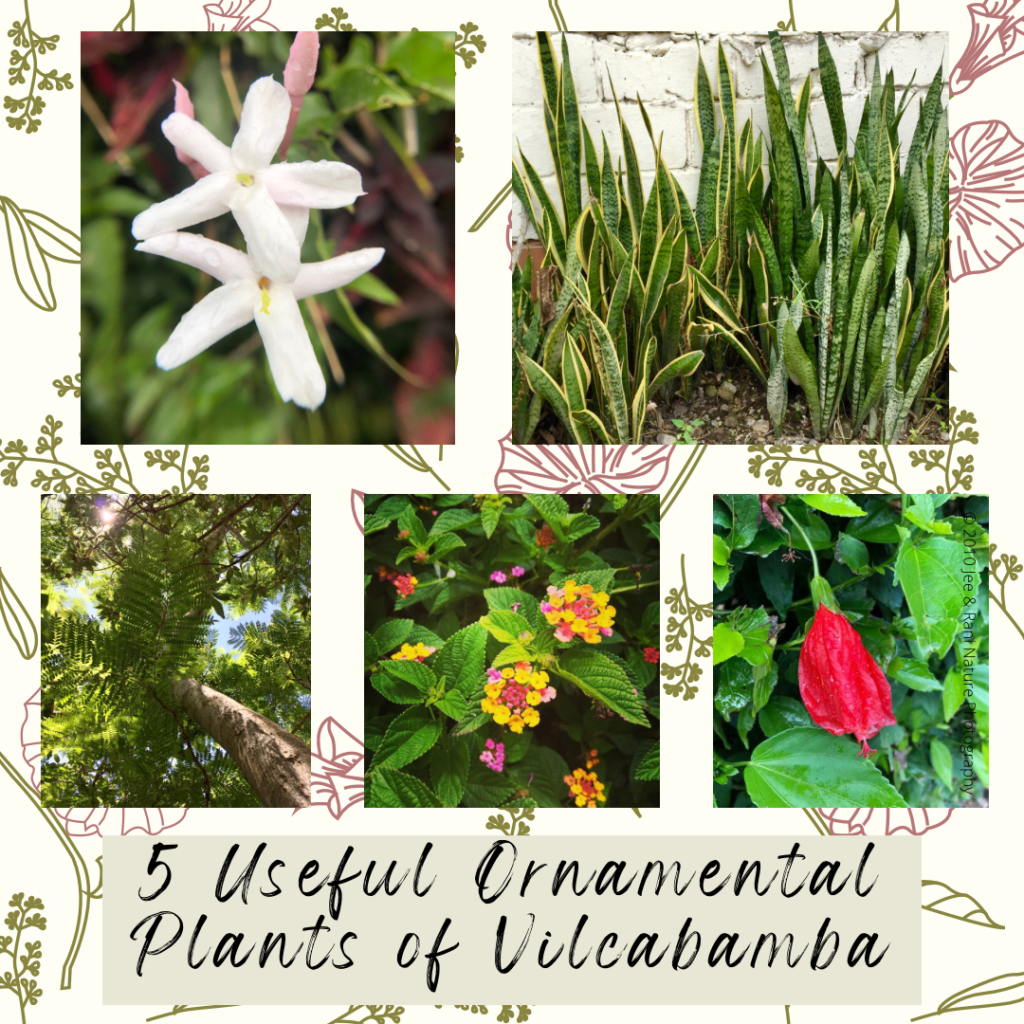While ornamental plants are appreciated for their beauty, most of these plants have numerous practical applications too. These plants are grown abundantly, yet are rarely utilized. In this post, I’ll be highlighting five very common decorative plants that you’ll see growing in and around Vilcabamba, Ecuador and discussing various ways they are used.
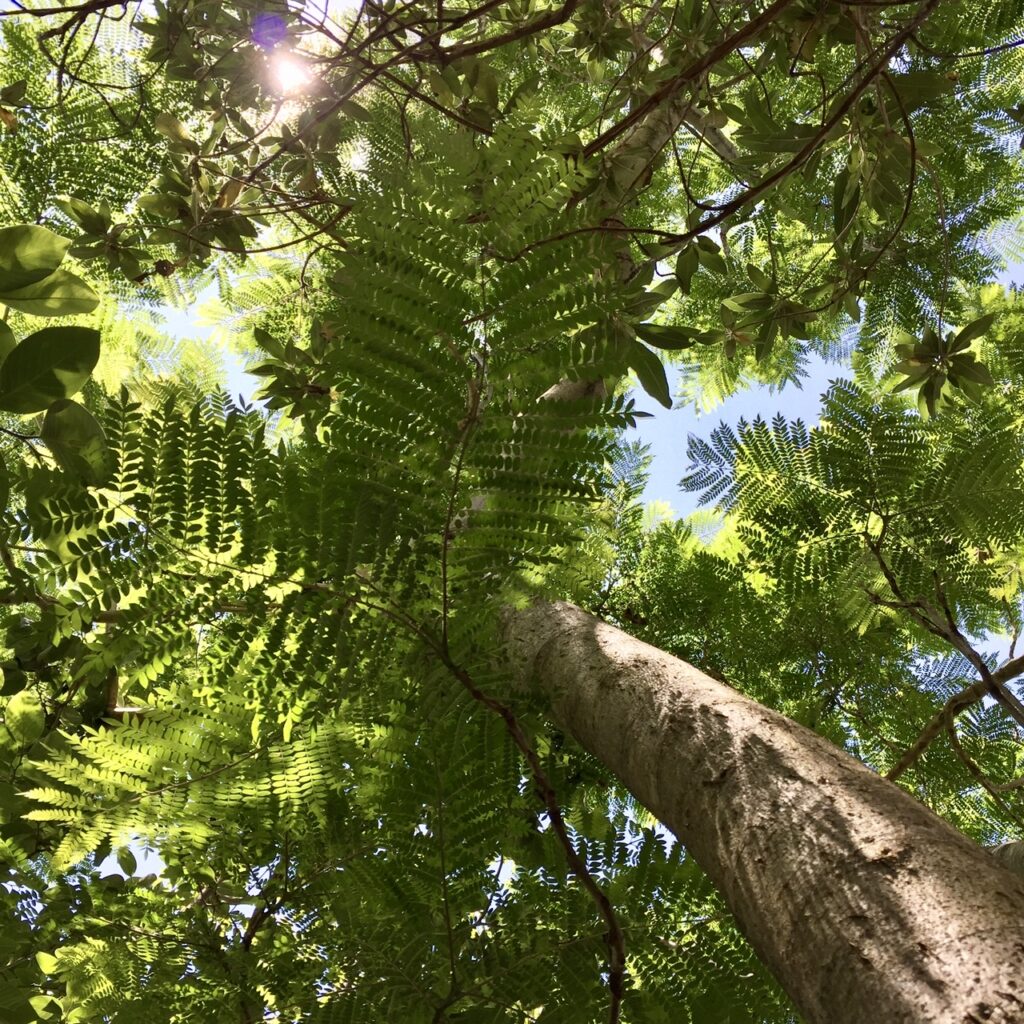
Jacaranda (Jacaranda mimosifolia)
Jacaranda is a tree in the Bignoniaceae family that has lovely fern-like foliage and violet-purple flowers. It is native to Central South America and it is now grown throughout the sub-tropics due to its beauty.
Despite being widely cultivated, Jacaranda mimosifolia is assessed as “vulnerable” by the IUCN Red List in its native range in northwest Argentina and Bolivia. Heavy logging and slash-and-burn agriculture practiced in these areas has caused habitat loss and continues to decrease populations there (Hills, 2020).
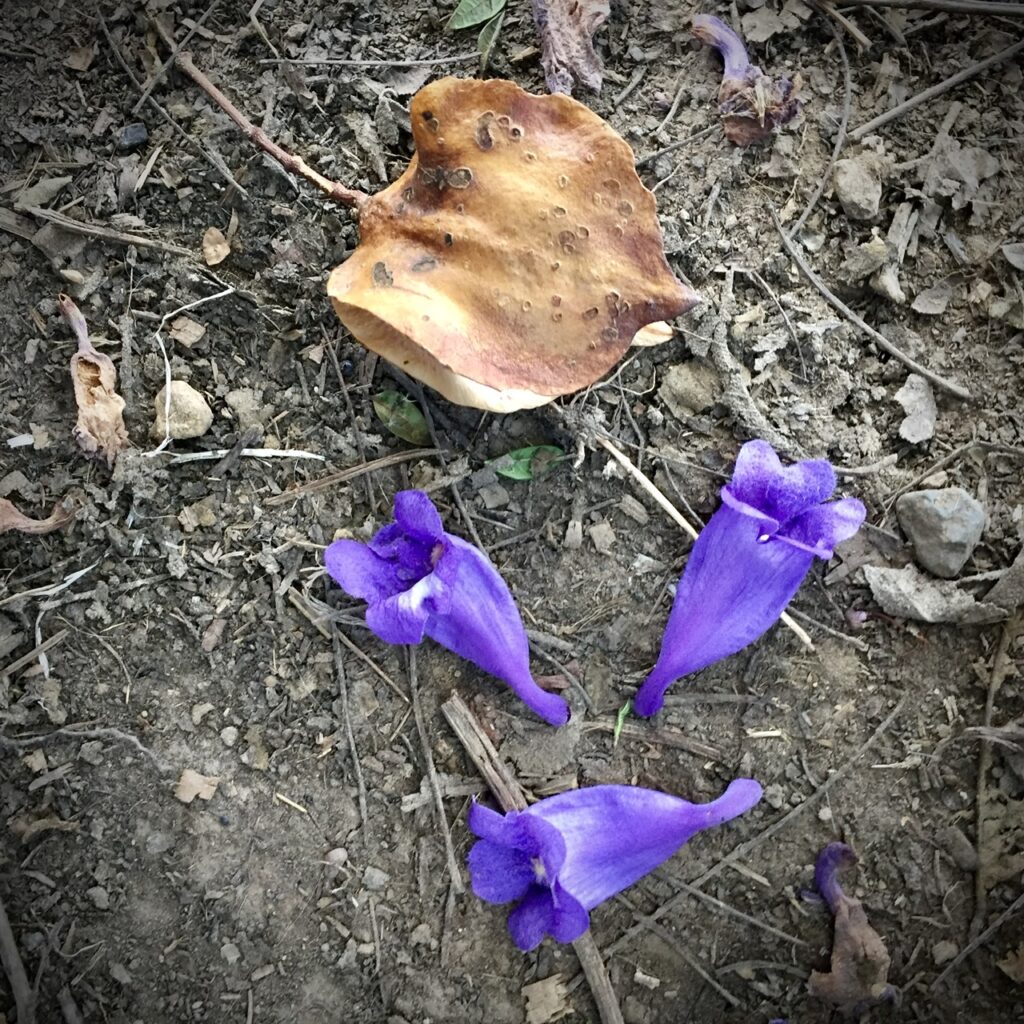
While typically considered an ornamental, jacaranda also has medicinal applications. A water extract of J. mimosifolia possesses antimicrobial properties & has been used to treat E. coli & staph infections. It has also been utilized for hepatitis. Hot Jacaranda leaf baths are used for wound & skin infections and for acne. Scientific studies show it may have the potential to treat leukemia.
Folk medicine has utilized the flowers, leaves & bark for neuralgia and varicose veins (Lau, n.d.)
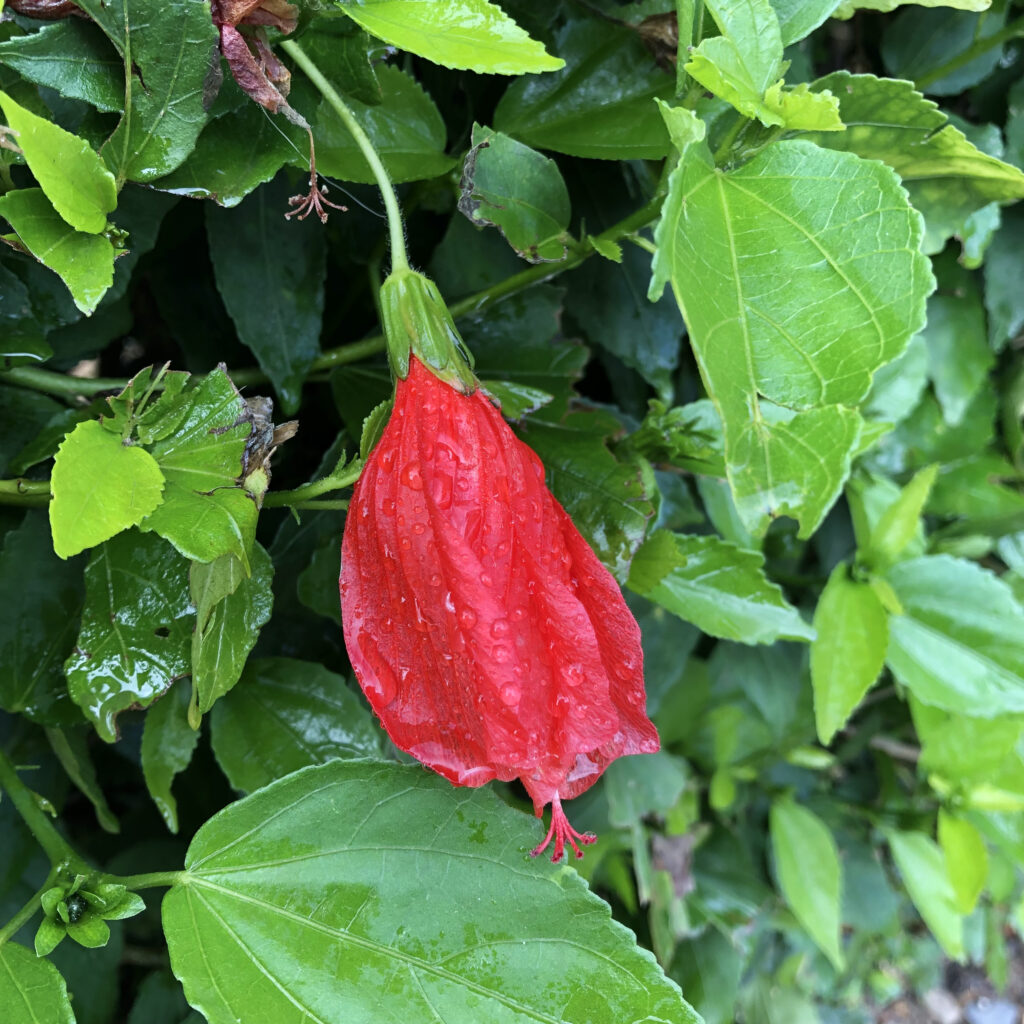
Hibisco Colibrí (Malvaviscus penduliflorus)
Also known as moco de guajolote, falso hibisco, or hibisco colibrí, Malvaviscus penduliflorus is a mallow family (Malvaceae) plant that is grown throughout tropical and subtropical regions. It’s native range includes Texas, Mexico, Costa Rica, Panama, Ecuador, Colombia, Peru, and Venezuela.
Hibisco colibrí is grown as an ornamental, a living fence, and as fodder for animals, including rabbits (Phuong, 2008).
M. penduliflorus has also been utilized in folk medicine for fever, preventing miscarriage, high blood pressure, diseases of the kidney, liver & lung diseases. In Cuba, an infusion of the flowers is used as a sedative. Studies have shown anti-inflammatory, antibacterial, and antifungal properties (Delange et al., 2015).
The plant produces mucilage that is used in hair treatments. The flowers can be utilized as a natural dye (García, 2018).
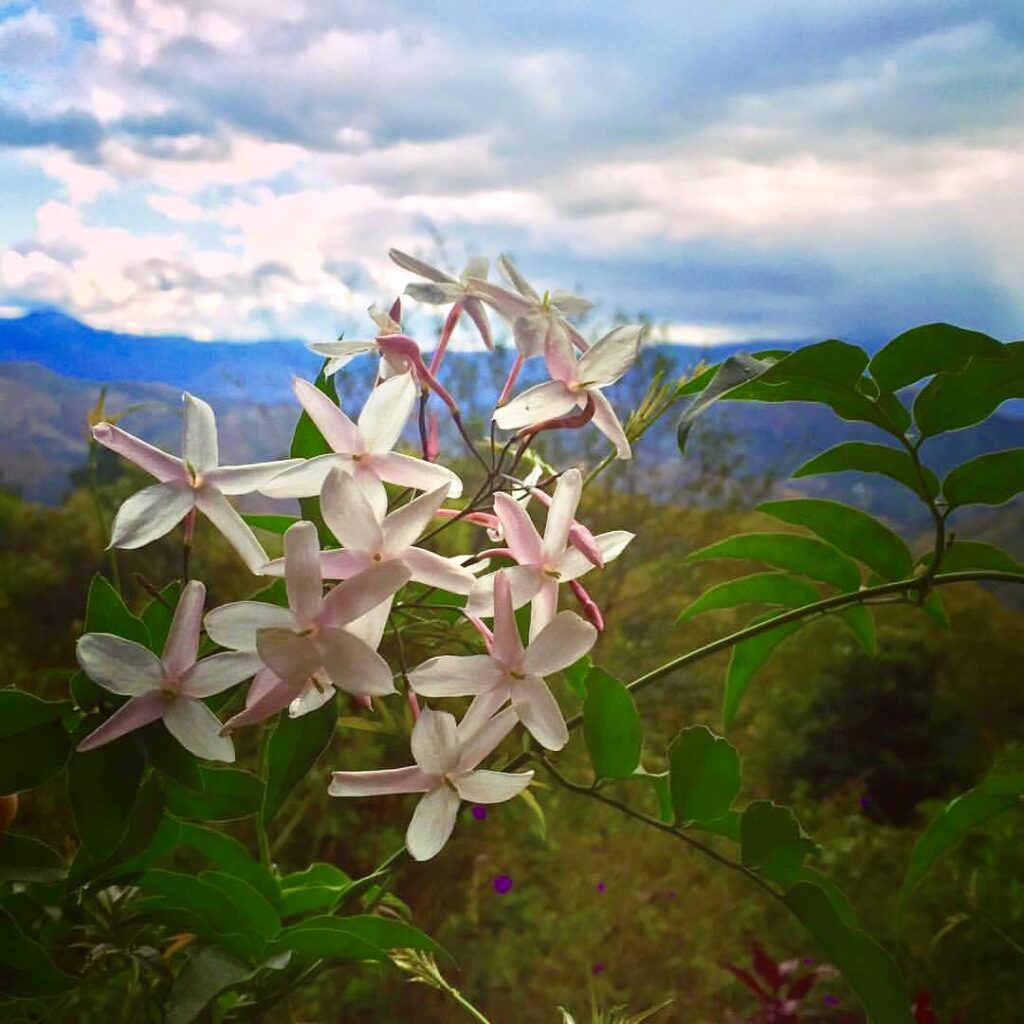
Spanish Jasmine (Jasminum grandiflorum)
Jasminum grandiflorum is a vining plant in the Oleaceae family. It is native to Southern China, Northeastern Africa, Pakistan, and Saudi Arabia.
J. grandiflorum has delightfully aromatic flowers that are used to make essential oils, perfumes, soaps, and cosmetics. The essential oil has muscle relaxing and aphrodisiac effects (PFAF, n.d.a).
Jasmine also has a wide range of healing applications. In folk medicine, the whole plant is utilized for various conditions. The roots have been used for headache, infertility, and, amenorrhoea. The leaves have been used for loose teeth, ear discharge & pain, wounds, and corns (Sachan and Paarakh, 2009).
The flowers are used for in diseases of the mouth, teeth, skin, & eyes, itchy skin, and to cool the body. All parts of the plant are used for painful menstruation, and various skin diseases, including ringworm, leprosy, and ulcers (Sachan and Paarakh, 2009).
A study has shown that an ethanol extract of J. grandiflorum does indeed have anti-ulcer effects (Umamatheswari et al., 2007).
Jasmine is an important part Ayurvedic herbal medicine. The plant is used for scorpion stings. A decoction of the leaves is used as a gargle. Fresh juice of the leaves is used for healing ulcers of the mouth, throat, and gums. The flowers are applied to the genitals as an aphrodisiac (Sachan and Paarakh, 2009).
The leaves are infused in clarified butter (ghee) to treat infected wounds and ulcers, for baldness, and as an ingredient in an eye salve for vision loss. The root of the plant is cooked with goat’s milk and sugar to relieve pain in urine retention and promote kidney stone release (Sachan and Paarakh, 2009).
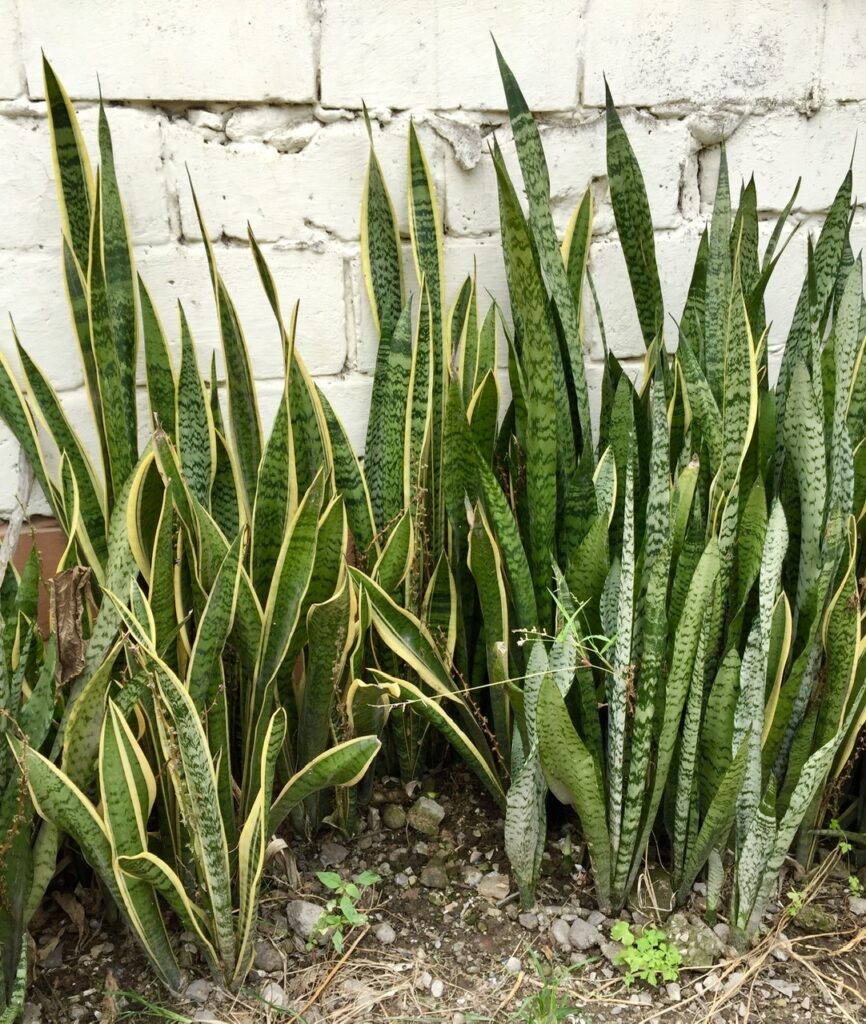
Snake Plant (Sansevieria trifasciata)
Sansevieria trifasciata is an Asparagaceae, or asparagus family, plant that is Native to the tropical zones of West Africa. Other common names include Mother in-Law’s tongue and lengua de suegra. It is grown widely as a house plant because it tolerates infrequent watering and low-light.
S. trifasciata is mildly toxic if consumed. The leaves contain a poison that can cause swelling and numbness on the tongue if eaten in large doses.
While it is not useful as a medicinal plant due to its toxicity, snake plant does have practical applications. A fiber obtained from the leaves is useful in making rope, clothing, fishing line, baskets, mats, and cordage (Adeniyi, 2020). The juice from the plant has been used as a varnish.
Snake plant is also highly effective at improving indoor air quality. It converts carbon monoxide into oxygen overnight and clears the air of toxins and airborne allergens, making it a great plant to keep in your bedroom. A study conducted by NASA, found that snake plant removes 107 different pollutants from the air, including cigarette smoke and formaldehyde (Berame et al., 2017).
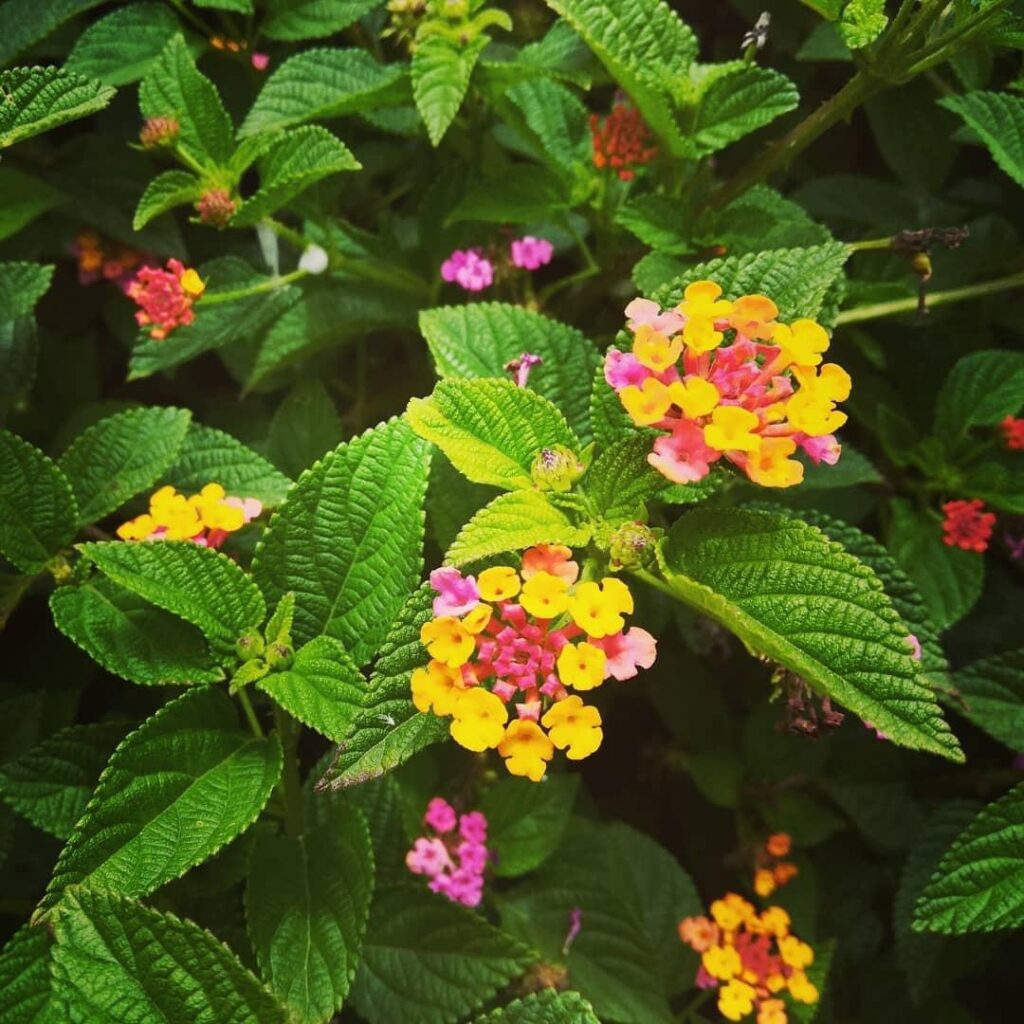
Common Lantana (Lantana camara)
Lantana camara is a Verbenaceae family plant that is native to the American tropics. It is commonly known as lantana or supirosa.
Lantana provides food and shelter for birds and insects. It is an excellent source of nectar for many different butterflies and moths. Various birds species inhabit lantana thickets, particularly when their natural habitat is no longer available (Negi et al., 2019).
Extracts from lantana leaves have antimicrobial, fungicidal, insecticidal and nematicidal effects. Studies have shown larvicidal activity of L. camara leaf extract against three different mosquito species, proving its potential to be used as biopesticide (Negi et al., 2019).
Lantana sticks are used for basket making and its leafy twigs are placed in the bottom of containers storing grains to help deter mice and insects. In parts of India, lantana leaf mulch is used to increase soil fertility and moisture retention (Negi et al., 2019).
Lantana leaves are toxic to most animals, causing hepatotoxicity and photosensitivity. Ingesting lantana has reportedly contributed to poisonings of various grazing animals, including cattle, buffalo, sheep and goats. The green, unripe berries are also toxic and ingestion has apparently caused human fatalities (Negi et al., 2019).
Despite many mentions in the literature of toxicity concerns, folk medicine traditions have utilized lantana extracts to treat various conditions, including chicken pox, measles, asthma, itchy skin, wounds, and leprosy (Negi et al., 2019).
Jacaranda, Turk’s cap mallow, Spanish jasmine, Snake plant, & lantana are abundant in and around Vilcabamba. In addition to their ornamental value, these plants have a myriad of practical applications.
References
Adeniyi, A.G., Akorede, A.S., and Ighalo, J.O. International Polymer Processing Journal of the Polymer Processing Society, 35(4):344-354. DOI:10.3139/217.3914
Berame, J.S., Cuenca, S.M.E., Cabilin D.R.P., and Manaban, M.L. (2017). Preliminary Phytochemical Screening and Toxicity Test of Leaf and Root Parts of the Snake Plant (Sansevieria trifasciata). Journal of Phylogenetics & Evolutionary Biology, 5(3). DOI: 10.4172/2329-9002.1000187
Delange, D.M., Morales Rico, C.L., Sierra Pérez, R.C., Canavaciolo, V.G., and Rodríguez Leyes, E.A. (2015). Determination by GC-MS of the Hexane Extract Components from Malvaviscus penduliflorus Flowers Growing in Cuba. Analytical Chemistry Letters. https://www.researchgate.net/publication/281410156_Delange_et_al_ACL_2012_Malvaviscus_P
Hills, R. (2020).Jacaranda mimosifolia. The IUCN Red List of Threatened Species 2020: e.T32027A68135641. https://dx.doi.org/10.2305/IUCN.UK.2020-3.RLTS.T32027A68135641.en. [Accessed on April 15, 2022.]
Gachet, M.S., and Schühly, W. (2008). Jacaranda-An ethnopharmacological and phytochemical review. Journal of Ethnopharmacology, 121(1):14-27. DOI:10.1016/j.jep.2008.10.015
García-Trejo, F.J., Guevara-González, R.G., Feregrino-Pérez, A.A., Álvarez-Mayorga, B.L., and Rivera Pastrana, D.M. (2020). Jacaranda flower (Jacaranda mimosifolia) as an alternative for antioxidant and antimicrobial use. Heliyon, 6(12). https://doi.org/10.1016/j.heliyon.2020.e05802
García Martín, F. (2018). La Familia Malvaceae en la flora ornamental de Sevilla. Universidad de Sevilla, Departamento de Biología Vegetal y Ecología. https://idus.us.es/bitstream/handle/11441/82089/GARCÍA%20DE%20ALVEAR%20GÓMEZ%20DE%20TERREROS%2C%20Mª%20DEL%20VALLE.pdf?sequence=1&isAllowed=y
Jasminum grandiflorum.(n.d.) The Herbarium Catalogue, Royal Botanic Gardens, Kew. Published on the Internet: https://powo.science.kew.org/taxon/urn:lsid:ipni.org:names:328130-2 [Accessed on April 15, 2022]
Lau, J. (n.d.) Jacaranda mimosifolia. U.C. Davis Plant Sciences. https://psfaculty.plantsciences.ucdavis.edu/courses/enh101/Favorite%20Tree/JaniceLau.pdf
Malvaviscus penduliflorus (n.d.) The Herbarium Catalogue, Royal Botanic Gardens, Kew. Published on the Internet: https://powo.science.kew.org/taxon/urn:lsid:ipni.org:names:150478-2 [Accessed on April 15, 2022]
Negi, G.C.S., Sharma, S., Vishvakarma, S.C. Samantha, S.S., Maikhuri, R.K., Prasad, R.C., and Palni, L.M.S. Ecology and Use of Lantana camara in India. (2019). The Botanical Review. 85, 109–130. https://doi.org/10.1007/s12229-019-09209-8
Phuong, L.T.L. (2008). Evaluation of local forages for rabbits in Central Vietnam. Proceedings MEKARN Rabbit Conference: Organic rabbit production from forages (Editors: Reg Preston and Nnguyen Van Thu), Cantho University, Vietnam, 25-27. http://hostcambodia.com/mekarn/prorab/phuo.htm
PFAF Plant Database.(n.d.a). Jasminum grandiflorum. https://pfaf.org/user/Plant.aspx?LatinName=Jasminum+grandiflorum
PFAF Plant Database.(n.d.b). Sansevieria trifasciata. https://pfaf.org/user/Plant.aspx?LatinName=Sansevieria+trifasciata
Sachan, S. and Paarakh, P. (2009). Jasminum grandiflorum Linn (Chameli): Ethnobotany, Phytochemistry and Pharmacology – A review. Pharmacologyonline 2: 586-595. https://www.researchgate.net/profile/Sandeep-Sachan/publication/215517134_Jasminum_grandiflorum_Linn_Chameli_Ethnobotany_Phytochemistry_and_Pharmacology_-_A_review/links/02b35d9cc8ff3ad6fa2f91a3/Jasminum-grandiflorum-Linn-Chameli-Ethnobotany-Phytochemistry-and-Pharmacology-A-review.pdf?origin=publication_detail
Umamaheswari, M., Asokkumar, K., Rathidevi, R., Sivashanmugam, A.T., V. Subhadradevi, V., and Ravi, T.K. (2007.) Antiulcer and in vitro antioxidant activities of Jasminum grandiflorum L., Journal of Ethnopharmacology, 110(3): 464-470. https://doi.org/10.1016/j.jep.2006.10.017.
Wolverton, B.C., Johnson, A., and Bounds, K. (1989). Interior Landscape Plants for Indoor Air Pollution Abatement. NASA Science and Technology Labratory. https://ntrs.nasa.gov/api/citations/19930073077/downloads/19930073077.pdf

